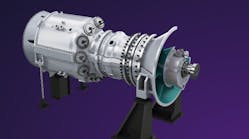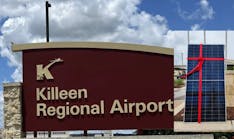Natural gas pipeliner Williams exploring potential for Hydrogen customers
Energy transportation and storage solutions firm Williams has signed a memorandum of understanding (MoU) with Daroga Power, a developer of distributed generation energy assets, to identify long-term, end-use customers for clean hydrogen and offtake options for its environmental attributes in Wyoming.
Hydrogen deliveries are expected to begin as soon as 2025.
Tulsa-based Williams intends to leverage its assets for clean hydrogen blending, storage and transportation to local and regional markets, including the Pacific Northwest, via its 4,000-mile bi-directional Northwest Pipeline transmission system.
Additionally, the firm is working with the University of Wyoming’s School of Energy Resources to evaluate the impact of hydrogen blending on energy infrastructure in Wyoming as well as hydrogen production. This research is funded by a grant from the Wyoming Energy Authority. It is expected to complete in 2023.
Recent EnergyTech coverage on Hydrogen in the C&I Energy Transition
Nel Hydrogen contracted to deliver Alkaline Electrolyzers for Oklahoma H2 project
Plug Power supplying Fuel Cells, H2 Infrastructure for Food Transporter
Subscribe to our free, tri-weekly newsletter for more Insights into C&I Decarbonization moves
White Paper on H2 at EnergyTech: Economic & Environmental Benefits with Versatile Membranes
“This partnership with Daroga Power could lead to the commercial certainty required to enable the first major phase of hydrogen-based energy transportation and storage in Wyoming, building toward our long-term goal to scale up over time and create a clean energy hub in the southwest part of the state where we own significant acreage,” said Chad Zamarin, Senior Vice President for Corporate Strategic Development at Williams. “The potential to blend hydrogen into our existing natural gas stream is a significant advantage to accelerate the use of hydrogen in reducing carbon emissions across many sectors and applications, particularly those most difficult to decarbonize. Demand for clean energy is on the rise, and we expect the commercialization and cost-competitiveness of hydrogen to take hold as Inflation Reduction Act incentives seed market growth.”
Williams owns and operates more than 30,000 miles of pipelines system wide – including Transco, the nation’s largest volume and fastest growing pipeline – and handles approximately 30 percent of the natural gas in the United States that is used every day for clean-power generation, heating and industrial use.
In Utah, which the Northwest Pipeline touches, Mitsubishi Power is working with developers as a massive hydrogen storage project. Intermountain Power Agency also is planning to use a blend of H2 in the its gas-fired power plant currently under work.





